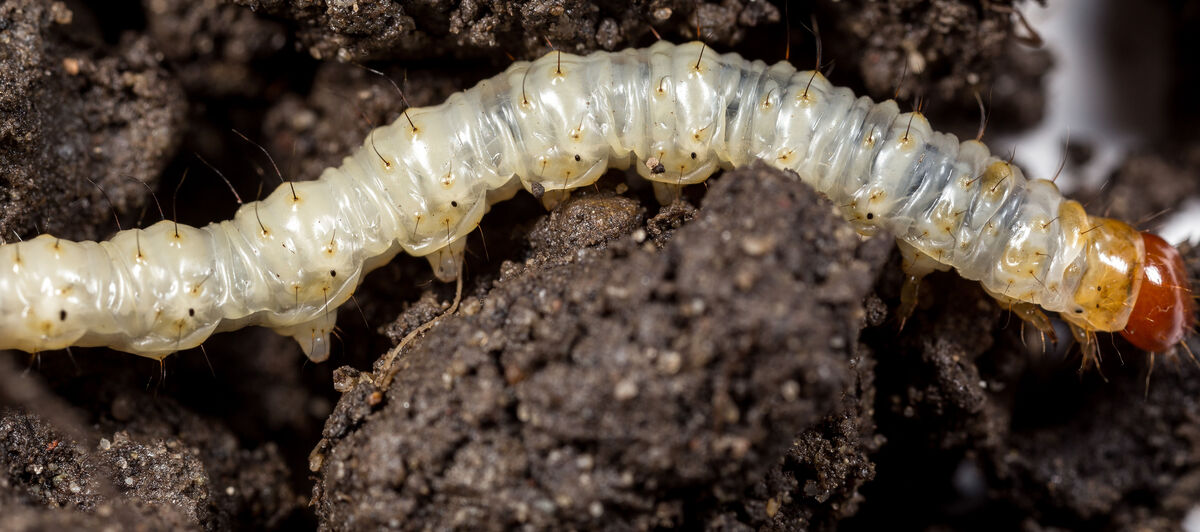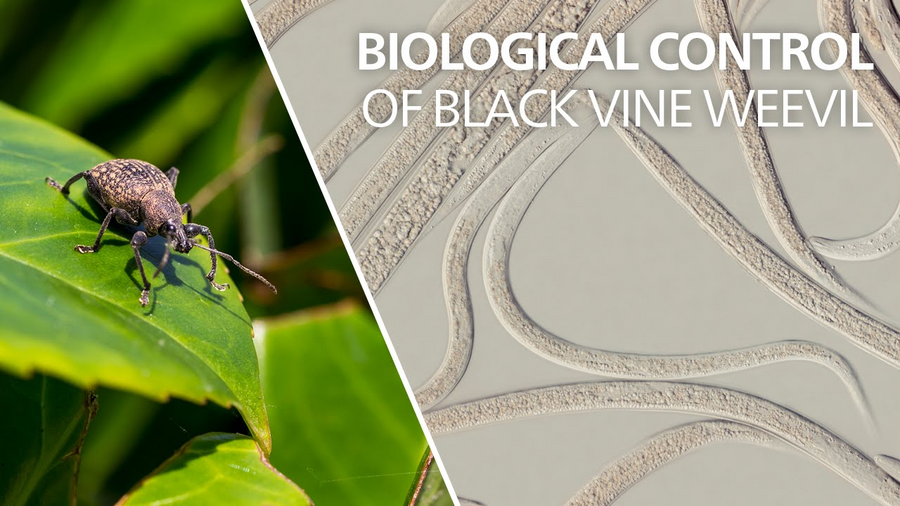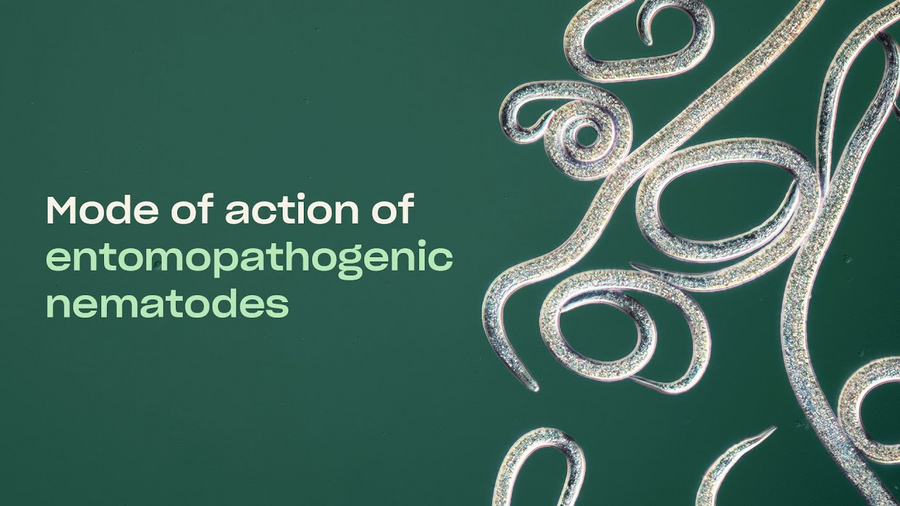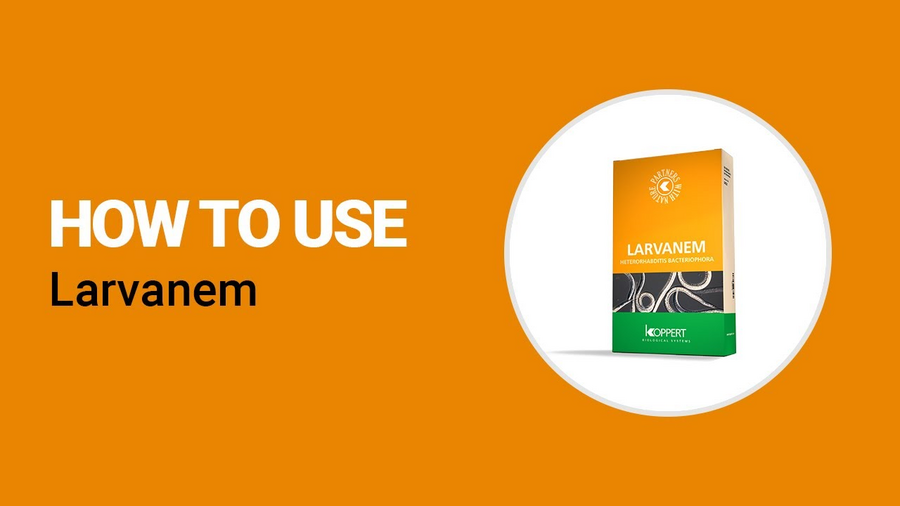Heterorhabditis bacteriophora is a species of beneficial nematode commonly used in biological pest control. These microscopic roundworms are parasitic and are known for their effectiveness in controlling a variety of insect pests. Heterorhabditis bacteriophora nematodes infect their hosts by entering through natural openings or the cuticle. Once inside the host, they release symbiotic bacteria, typically of the genus Photorhabdus, which quickly multiply and cause septicemia, ultimately killing the host within a few days. This species is particularly effective against insect pests such as larvae of beetles (including grubs). Heterorhabditis bacteriophora nematodes are usually applied to the soil. This biological control method, offers a natural and environmentally friendly approach to pest management in agriculture and horticulture.
Heterorhabditis bacteriophora nematodes for pest control
The beneficial nematode Heterorhabditis bacteriophora controls a variety of pests in horticulture and agriculture, including:
-
Beetle larvae (incl. grubs)
Beetle larvae (incl. grubs)
- Amphimallon aestivus
- Anoxia villosa
- Asiatic garden beetle (Autoserica castanea)
- Black vine weevil (Otiorhynchus sulcatus) and other Otiorhynchus spp.
- Brown chafer (Serica brunnea)
- Common cockchafer (Melolontha melolontha)
- Common garden chafer (Phyllopertha horticola)
- Dune chafer (Anomala dubia)
- Dung beetles (Aphodius spp.)
- European chafer (Amphimallon majale)
- Flea beetles (Phyllotreta spp.)
- Japanese beetle (Popilia japonica)
- Oriental beetle (Anomala orientalis)
- Phyllophaga spp.
- Summer chafer/June beetle (Amphimallon solstitialis)
- Welsh chafer (Hoplia philanthus) and other Hoplia spp.
-
Caterpillars
Caterpillars
- Common swift moth (Korscheltellus lupulina)

How do Heterorhabditis bacteriophora nematodes work?
Heterorhabditis bacteriophora nematodes control pests through a process called parasitism. When applied, these microscopic roundworms actively seek out beetle larvae. Once they locate a suitable host, Heterorhabditis bacteriophora nematodes enter the pest's body through natural openings.
Once inside the pest, the nematodes release symbiotic bacteria, typically of the genus Photorhabdus, which quickly multiply and cause septicemia, ultimately killing the host within a few days. The nematodes then feed and reproduce within the cadaver of the dead host, resulting in the emergence of a new generation of nematodes that can continue to seek out and infect other pests in the area. In this way, Heterorhabditis bacteriophora nematodes effectively control pests by parasitizing and killing them, providing a natural and environmentally friendly method of pest management in agriculture and horticulture.
How to apply Heterorhabditis bacteriophora nematodes?
- Nematodes can be applied using a watering can, an airblast sprayer, through a sprinkler system, with a backpack sprayer, or a vehicle-mounted spray unit
- To avoid blockage, all filters should be removed, especially if finer than 0.3 mm (50 mesh)
- Use a maximum pressure of 20 bar/290 psi (on nozzle)
- The spray nozzle opening should be at least 0.5 mm (500 microns – 35 mesh) - preferably high flow rate cone nozzle types
- Continuous mixing should take place to prevent nematodes sinking to the bottom of the spray tank
- Avoid sprayers equipped with centrifugal or piston pumps
- Water tank temperature must not exceed 25°C/77°F and pH must be between 4 and 8
- Distribute the spraying solution evenly over the soil/media surface
Application through irrigation systems:
- Pressure-compensated irrigation systems are recommended. If not available, spray or drench applications are recommended. For injection through Dosatron/Venturi systems, please contact your local representative for specific advice
- Spray the solution as soon as it is prepared and within a short timeframe. Do not store mixed suspensions
Best conditions for use of Heterorhabditis bacteriophora nematodes
- Heterorhabditis bacteriophora is active between 16-35°C/61-95°F but performs best at temperatures between 19-33°C/66-91°F
- Soil temperature below 5°C/41°F and above 35°C/95°F can be lethal
- Nematodes are susceptible to ultraviolet light (UV): do not use them in direct sunlight
- The moisture content of the soil must be kept high for several days after application. When possible, irrigate the crop before and right after application
- Adding an adjuvant and/or an anti-desiccant/humectant can be beneficial. Ask your Koppert representative/distributor for more information
- Spray in the evening (or morning in some cases) allowing nematodes to work for several hours within the optimal range of temperature and humidity, as described above


